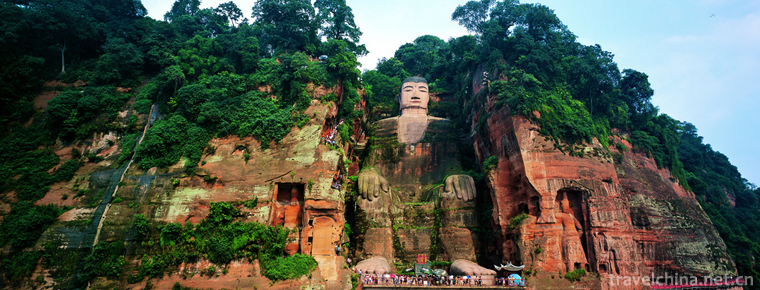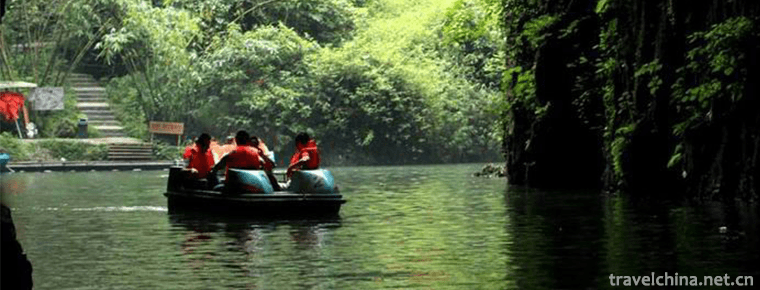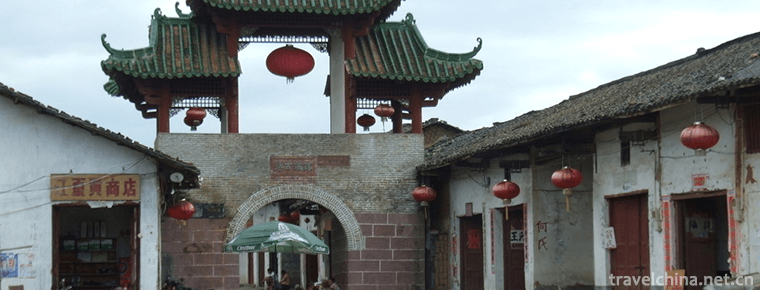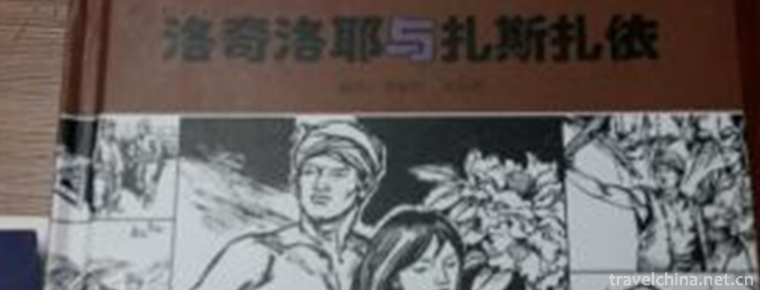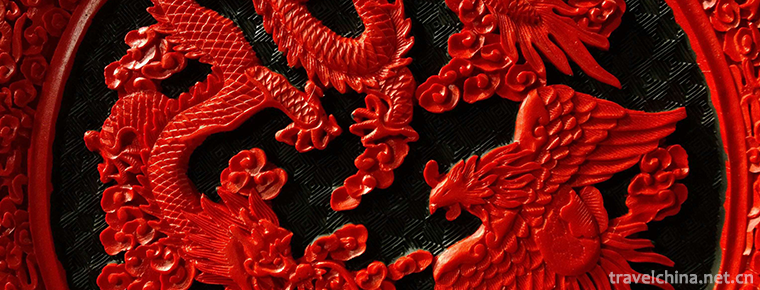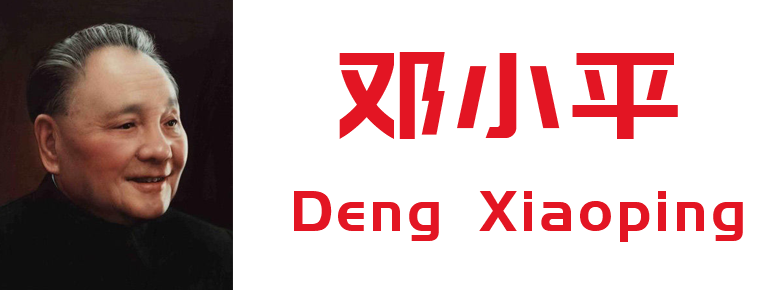jingyuetan national forest park
Jingyuetan, National AAAAA Class Tourist Scenic Spot, National Scenic Spot, National Forest Park, National Civilized Scenic Spot Demonstration Site, National Water Conservancy Scenic Spot, National National Outdoor Sports Base.
Jingyuetan Scenic Area is located in Chunjingyue Economic Development Zone, southeast Minister of Changchun City, Jilin Province. It is only 18 kilometers away from the People's Square in the center of the city. The area of the scenic area is 96.38 square kilometers. The area of the water area is 5.3 square kilometers, and the forest coverage rate is over 96%. Jingyuetan Lake is named for its meniscus shape. It is a sister pool with Taiwanese Riyuetan Lake. It is one of the "Eight Sceneries of Jilin" and is known as "Jingyuetan Shenxiu".
Jingyuetan Lake was the first water source for Changchun City in 1934, which was constructed artificially. It was called "water source" or "water storage pond" in the period of occupation. The name of Jingyuetan was created by Zheng Yu, the second son of Zheng Xiaoxu, Prime Minister of Manchuria and then director of the Capital Construction Bureau of Manchuria. The forests in the scenic area are constructed artificially and contain a complete forest ecological system of 30 tree species. They have unique geographical advantages, making them "a pure land in a noisy city". They have the reputation of "Asia's largest artificial forest sea", "Green Sea Pearl", "Urban Oxygen Bar". They are the ecological green core and city card of Changchun City.
Jingyuetan scenic spot is full of scenery, and the four seasons are different. The largest man-made forest in Asia is related to mountains and rivers, which forms the picture of the changing seasons of Jingyuetan Lake. Jingyuetan has become an ideal place for spring, summer, autumn and winter.
Jingyuetan is not only an eco-leisure center, but also a sports fitness center. As the main venue of Changchun Summer Festival and Changchun Ice and Snow Festival, Jingyuetan International Skiing Festival, Jingyuetan Forest Marathon, Jingyuetan Mountain Bicycle Marathon, Jingyuetan Forest Orienteering Race, Jingyuetan Dragon Boat Race and other events have been launched successively, devoted to promoting healthy, fashionable and leisure life. Lifestyle, to create an international well-known gathering place for tourism and cultural activities.
Location context
Jingyuetan is located in Jingyue National High-tech Industrial Development Zone, southeast of Changchun City, Jilin Province. It is 14 kilometers from the People's Square in the city center, 16 kilometers from Changchun Station and 28 kilometers from Changchun Longjia International Airport.
Geographical coordinates are 125 degrees East 21 minutes and 43 degrees north 52 minutes.
geographical environment
topographic features
Jingyuetan is located in the front platform of Changbai Mountains, which belongs to the transition zone from the foot of Changbai Mountains to the western grassland. It spans three flora of Changbai Mountains, Inner Mongolia and North China, and its forest coverage is over 96%. The scenic spot is between 220 meters and 406.5 meters above sea level. The topography varies from north to south. The topography in the north is quite undulating. The topography in the south is relatively flat and open. The undulating mountains stretch into vertical and horizontal valleys, surrounded by a pool of blue water like a crescent moon.
Jingyuetan Lake is a low hilly terrain with 119 peaks and sizes. There are 86 mountains extending from north to south to the edge of the lake. It not only has ravines and mountains, but also has a bird's eye view of the lake. The whole mountain is like a python winding, of which Dajia Mountain is still the highest elevation.
Climatic characteristics
Jingyuetan Lake is located in the temperate semi-humid monsoon climate zone, with the highest temperature of 28.32 C and the lowest temperature of - 22.48 C. The average temperature in winter is about 10-18 degrees below zero. The average annual precipitation is 654.3 mm, and the depth of snow cover in winter is about 30 cm. The content of negative oxygen ion in forest is 100 times higher than that in urban area.
Resource situation
Biological resources
As the largest plantation in Asia, Jingyuetan Lake is rich in plant resources. Around it are 8000 hectares of artificial forest sea planted successively in the 1970s. The plant pattern in the garden simulates the vertical distribution characteristics of plants in Changbai Mountain. There are more than 1000 species of plants, large forests, mountain flowers and medicinal plants, and it is a living plant specimen bank. There are more than 550 species of higher plants such as Pinus sylvestris var. mongolica, Larix gmelinii, Pinus koraiensis, Pinus tabulaeformis, Pinus koraiensis, Spruce, Fir and natural secondary forests, Poplar, Birch, Quercus mongolica, Tilia birch and a small number of poplar, elm, Juglans mandshurica, forming a complete forest ecological system with multi-species, multi-level and multi-structure.
There are more than 60 kinds of birds, such as pheasants, magpies and wild ducks, more than 20 kinds of animals, such as squirrels, hedgehogs, roes and foxes, and 460 kinds of insects in Jingyuetan.
development history
In 1932, after acquiring the Manchurian Railway Affiliated Land in Changchun, the Japanese invading army found that the Fengshijun government at that time had a tight control over the water source in Changchun, which made the water source of the Manchurian Railway Affiliated Land very tense. After the establishment of the Puppet Manchukuo, the Puppet Manchukuo Capital Construction Bureau, assisted by the "Manchu Railway", immediately investigated the water sources in Changchun and found deep groundwater about 100 meters underground.
The hilly terrain below Xinli City and the largest river in the region is Yitong River. There are no mountains and reservoirs on both sides of the Yitong River. All the tributaries suffer from narrow and shallow conditions. Only the rivers along the Zihe River do not dry up all the year round. In 1934, after comparing water quality, water quantity and cost, the Puppet State Capital Construction Bureau finally decided to build a dam at a place called Yao Station 12 kilometers southeast of Changchun to intercept the water along the Zihe River.
In May 1934, the water storage project was started and water supply began in January 1936. The daily water supply capacity of this reservoir is 40,000 cubic meters, which exceeds the water purification capacity of Nanling Water Purification Plant by 20,000 cubic meters. The 4.6-square-kilometer reservoir was later named "Jingyuetan".
Honors
In 1988, Jingyuetan was approved as a national scenic spot by the State Council.
In 1989, it was approved as National Forest Park by the State Forestry Administration.
In 1995, the administrative committee of Jingyuetan Tourism Economic Development Zone in Changchun was established. Jingyuetan National Forest Park was positioned on urban forest eco-tourism, and the infrastructure construction of scenic spots was strengthened.
In April 1999, Changchun Jingyuetan Tourism Development Group Co., Ltd. was established.
In 2001, it was rated as a national 4A tourist attraction, which has passed ISO9002 national quality management system certification and ISO14001 international environmental management system certification.
On March 15, 2003, the Vasa Ski Festival in Jingyuetan was officially established in Changchun, China.
In February 2009, it was awarded the title of "National Civilized Scenic Spot" by the Central Civilization Office, the Ministry of Construction and the National Tourism Administration.
On January 14, 2011, it was officially awarded "National AAAAA Class Tourist Scenic Spot" by the National Tourism Administration.
On December 31, 2012, "Jingyuetan" was awarded as a well-known trademark in China.
In April 2012, it was awarded "the first batch of national standardized service demonstration units" by the National Tourism Administration.
In August 2012, it was awarded "National Outdoor Sports Base for National Fitness" by the State General Administration of Sports.
In 2013, the All-China Federation of Trade Unions identified it as "the vanguard of workers".
In June 2014, the Vasa International Skiing Festival in Jingyuetan officially joined the World loppet Sports Organization.
In July 2014, it was appraised as "the outstanding contribution unit of the National Sunshine Sports Congress" by the State General Administration of Sports, the Ministry of Education and the Central Committee of the Communist Youth League.
In November 2014, Jingyuetan was rated as one of the top ten excellent sports tourism scenic spots in China.
In December 2014, Jingyuetan was named a famous service enterprise in Jilin Province.
In February 2017, Jingyuetan was awarded the National Sports Industry Demonstration Unit by the State General Administration of Sports.
In July 2017, the Vasa International Skiing Festival in Jingyuetan was awarded the first batch of national sport tourism events.
In December 2017, the Vasa International Skiing Festival in Jingyuetan was awarded the top ten Chinese brand festivals in the exhibition industry in 2017.
In December 2017, the Vasa International Skiing Festival in Jingyuetan was awarded the top ten most influential ice and snow tourism festivals in China.
Myths and legends
Legend has it that one year, the seven daughters of the Queen Mother went to the world to play. Her seventh daughter, the Seven Fairies, saw a young man carrying a broken umbrella and wiping tears as she walked. She became a village maid and they loved to live together at first sight. The Queen Mother was very angry when she learned about this. She decided to send Tianbing Tianjun to capture the seven fairies. On that day, the sky suddenly overcast, and a strong wind blew the seven fairies into the sky. Looking at the hut where she and her lover lived, the seven fairies could not help falling two lines of tears, one drop in the south, into Taiwan's Sun Moon Lake, one drop in the north, into Changchun's Jingyue Lake.
However, due to the small amount of rivers along the sub-rivers, the water supply of the Puppet State Capital is urgent in five years. The backup water source of Huanglong Park Reservoir (intercepting three runoffs in the upper reaches of Xihegou, the tributary of Yitong River, and the Nanhu Lake in Changchun nowadays) can only be used. In the last two years of the Puppet State Capital, the Yitong River water intercepted by Xiaobanqiao sluice of Nanling Waterworks has been used as the In 1958, with the completion of Xinlicheng Reservoir, the Yitong River began to supply water to Nanling Waterworks after regulating the flow of the Reservoir, and Jingyuetan was changed to the reserve water source of Changchun City.
Tourism information
Opening Hours
Opening hours of scenic spots: 6:00-21:00. Open to the outside world all year round and sell tickets all day.
Ticket information
Tickets for scenic spots: 30 yuan.
Personal Annual Card: 300 yuan.
Tourist bus for scenic spots: 10 yuan per person per trip, 8:30-16:30 operation.
Traffic information
Bus routes:
Take No. 102 (People's Square - Changying Century City) and get off at the main gate of Jingyue.
Take No. 120 (one stop - College of Economics and Information) and get off at the main gate of Jingyue.
Take No. 160 (Changchun Station - Jingyuetan) and get off at Jingyuetan.
Rail transit:
Light Rail Line 3 (Changchun Station - Changying Century City) gets off at Jingyue Park.
Favoured policy
1. Active servicemen, disabled persons, the elderly over 65 years old, retired veteran cadres and state security personnel are exempted from tickets with valid certificates;
Children under 6 years of age (including 6 years of age) or under 1.2 meters of height (including 1.2 meters) are exempted from tickets.
Tickets for minors aged 6 years (excluding 6 years old) to 18 years (including 18 years old), full-time undergraduate and under-educated students, and elderly people aged 60 years (including 60 years old) to 65 years old are half-price.
4. The moral model at or above the municipal level is exempted from tickets by valid certificates;
5. Overseas Chinese, Returned Overseas Chinese and Relatives of Overseas Chinese shall be exempted from tickets by means of the Certificate of Returned Overseas Chinese Families of the Changchun Municipal People's Government.
6. Press and media journalists are exempted from tickets by means of press certificates issued by the State Administration of Press, Publication, Radio, Television and Television.
7. The tickets are exempted by the national membership certificates of the Chinese Photographers Association, the Chinese Painters Association, the Chinese Writers Association, the Chinese Calligraphers Association and the Chinese Musicians Association.
8. On May 1st Labor Day, tickets are exempted with model labor certificates at or above the municipal level.
9. Changchun users with low-guaranteed valid certificates enjoy free tickets.
Teachers are exempted from tickets on Teachers'Day on September 10.
11. On the Ninth Double Ninth Festival in the early September of the lunar calendar, people over 60 years old are exempted from tickets with their ID cards.
On 12 and 5.19 China Tourist Day, tickets for Jingyuetan are half-price.
13. The blind, the mentally disabled, the mentally disabled, the mentally disabled and the disabled of the first and second class limbs are allowed to enter the scenic area with valid certificates, and one escort is allowed to enter the scenic area free of tickets.
Scenic spots
Goddess of the Pure Moon: Goddess Square is the main venue for large-scale activities in the scenic area. The statue of Goddess of the Pure Moon stands in the center of the fountain square. The Goddess of the Pure Moon is the landmark greeting landscape of the Pure Moon Lake. It was created by Mr. Ye Yushan, the leading sculptor in China, and was officially completed on August 7, 2012. The Goddess of the Moon is 8.2 meters tall, the moon is 6 meters in diameter and the base is 2.28 meters high. On the whole, it looks like the goddess lying on the side of the string moon, holding her cheek in her left hand and meditating on her right hand. Her hair dances with the wind, her eyes close together. The goddess and the string moon merge organically into one. The rough surface of the string moon contrasts sharply with the smooth and delicate surface of the goddess themselves, which shows excellent artistic expression in the combination of motion and static. The Goddess of the Pure Moon embodies the theme of life of beauty, holiness, upward and great love.
Bisong Jingyue Tower: Bisong Jingyue Tower is the landmark building of Jingyuetan. The tower is situated on Guantan Mountain. From a distance, the Bisong Pure Moon Tower stands in the vast forest sea, like a green guard, defending the Pure Moon Lake. It was designed by Mr. Qikang, a famous architect in China. Its shape is based on pine and cypress, and the architecture incorporates the concept of plant. The tower is officially open to visitors on the 200th anniversary of the founding of Changchun. Its height is 50.2m. The "50" here represents the 50th anniversary of the founding of the People's Republic of China and the "2" represents the 200th anniversary of the founding of Changchun.
Taiping Bell Tower: Taiping Bell Tower was built to commemorate the absence of major forest fires in Jilin Province from 1981 to 1990. The bell tower is 17 meters high and hangs an alloy cast bell on the top floor. The bell is 2.5 meters high, 1.8 meters in diameter and weighs 3.3 tons. Tourists come here and ring the bell. The bell sounds loud and melodious, sounding in their ears and praying for peace.
Reservoir Dam: Jingyuetan is surrounded by mountains on three sides and a dam built artificially on one side. Reservoir dam is like a rolling dragon vein, lying on the edge of Jingyuetan Lake, between Guantan Mountain and Xishan Mountain. The dam is 555 meters long and 19 meters high. On the east side of the dam is a cruise ship pier, which can be used for tourists to go boating and play with water, see the changing mountains, see the spread of forests, see the abundance of water and grass, and see the steep mountains and rocks. It is really interesting. Near the dam, there is a small circular building built at the same time. It is one of the earliest buildings in the scenic spot. It is called "Drainage Tower", in which there are valves that control the water supply for Changchun City. Nowadays, its internal mechanical equipment has not changed much and can still be used. It has become the landmark landscape of Jingyuetan Lake.
Lotus weeping willow garden: Lotus weeping willow garden was built in 2004, located outside the reservoir dam, is the link between the front door scenic area and the main landscape. It covers an area of about 30 hectares. In the landscape planning and design of Lotus weeping willow garden, fully taking into account the characteristics of the original topography and landform, using the traditional Chinese garden art treatment techniques, according to local conditions, the water and plant landscape are organically combined.
Lotus weeping willow garden is composed of five lakes and ten bridges. It is an excellent place for self-cultivation and delight. In the garden, the beautiful lotus flowers in the lake and the graceful weeping willows on the shore echo each other, scattered and delicate, showing a different style. There are also two small cruise ship wharfs built here. Whenever the lotus blossoms, visitors can hold up a boat and wave between the lotus and the reed, which has a special interest. There are eight Han Baiyu reliefs in Guandong Square. Each relief has a legend about the beauty and long history of Jingyuetan. Eight wooden bridges and one wooden corridor are full of natural atmosphere.
Forest Bath: The core scenic spot of Jingyuetan Lake was opened to the outside world in 1999. It is known as the "natural oxygen bar" of human beings. It is an important tourist distribution center in the scenic area. It is rich in oxygen and has 100 times more negative oxygen ions than the urban area. It plays an important role in promoting human metabolism and improving immunity. The forest bathing ground, with its great stand of trees and quiet and fresh scenery, reflects the perfect picture of harmony between man and nature everywhere. Therefore, the forest bathing ground outlines Changchun as a "city of forests" with its superior ecological environment and unique tourist value.
The forest bathing ground planted 40,000 square meters of Pinus sylvestris var. mongolica forest. The characteristics of Pinus sylvestris var. mongolica are grey-black at the bottom of the trunk, reddish-brown at the top and beautiful in appearance. It is similar to Pinus sylvestris var. Changbai mountain. It belongs to evergreen trees with a maximum of 30 meters. It has strong cold resistance and adaptability. Such a perfect and orderly Pinus sylvestris var. mongolica forest is rare in China. The path across the forest bathing ground is paved with Borneol from Benxi, Liaoning Province. It is a fossil with ferns.
Jingyuetan Wetland: Jingyuetan is located in the section from stream bridge to river bridge. It covers an area of about 1 square kilometer. It mainly includes wetland, overflow dam, garden greening and berth. In the wetland park, birch, spruce, acer, Manchurian ash, reed, calamus, lotus and 40,000 greening trees, 60,000 shrubs, 30,000 square meters of aquatic plant reed, 20,000 square meters of kale, 100,000 square meters of perennial flowers and other plants were planted, which reconstructed a "artificial, like Tiancheng" high-quality ecological wetland landscape. Here, the environment is more suitable for the survival and reproduction of birds and other organisms, which sublimates the biodiversity of Jingyuetan Forest Park, enlarges the water surface area of Jingyuetan, purifies the water quality, and makes people seem to be in the original ecological landscape of Jingyuetan.
Shiyang Shihushan: Shiyang Shihushan Tomb is located in the forest on the west side of Wangtan Square, on the south side of the middle of Jingyuetan Reservoir, facing south from north. Because there are two stone sheep, one stone tiger and two stone men in front of the tomb, they are called Shiyang Shihushan. According to textual research, the tomb may be a military officer of the Jin Dynasty who led the army with more than three grades. The tomb has never been excavated since its liberation. It was listed as a key cultural relic protection unit in Changchun City in 1982.
Vasa Museum: Vasa Museum is the first cross-country skiing Museum in China. Stretching the atmosphere of the sloping roof shape, Dunhua simple architectural temperament, continuing the origin of Vasa skiing - Swedish traditional architectural style. Stone walls are rough and tough, solid wood exterior walls are dense and interlaced with each other, eaves and beams are beautifully shaped, and the whole building is skillfully integrated with the natural environment of Jingyuetan Lake, fully reproducing the perfect harmony between man and nature.
The Vasa Museum in Jingyuetan has the classical architectural style of Nordic. The Dalam horse displayed in the museum, the centuries-old snowboards presented by the Swedish Royal Family, and the exotic costumes, etc. vividly recount the story called Vasa. Snowboards from 1910 to 2010 are displayed in the museum, which shows the evolution of the past generations in detail.
North Putuo Temple
Beiputuo Temple is one of the famous temples in Northeast China. It was founded in 1996 and held the Kaiguang Grand Ceremony on June 22, 1997. Although the temple is not long ago, it is well-known far and near. There are many visitors to the temple at every Buddhist festival. There are many pilgrims and tourists. Being in the treasure land, I feel peaceful and beautiful, and fresh and cordial.
Wangtan Bridge: Located on the north side of the ski resort, Wangtan Bridge Square is novel and unique. It is the gathering place of wedding photography in Changchun. The bridge is winding, and you can see that it is a good place to enjoy the scenery of the moon.
Wooden Trestle Road (Forest Trail): The Jingyuetan Trestle Road starts at Guantan Bridge and ends at Jingyuetan Wetland with a total length of 14 kilometers. Jingyuetan wooden trestle road is popular with tourists and has become an important scenic spot. It has been highly appraised in the inspection and acceptance of the National Fitness Center Expert Group and in-situ visits. It is an important item of national fitness. The route choice of forest fitness trails is very exquisite. They are all places where the content of negative oxygen ions in the forest is relatively high. The negative oxygen ions in the air of each cubic centimeter are as high as 4000-5000, which is far higher than the air quality in urban areas. Negative oxygen ion has the functions of dust suppression, sterilization and air purification. Negative oxygen ion has strong antioxidant effect because it can provide negative charge. Medical research shows that negative oxygen ion has a good enhancement effect on all aspects of human body function. In sufficient negative ion environment, people not only can eliminate fatigue, improve sleep, play a better health care role, but also can be supplemented. Help to treat many diseases. The wooden trestle road of Jingyuetan Lake shuttles among the forests and crosses over the water at times with the attitude of "winding paths leading to seclusion". It adheres to the principle of not destroying any tree, provides convenience for tourists and citizens, and plays the role of diversion of people and vehicles. Walking in it, breathing smoothly, walking lightly and vigorously, is the best choice for fitness. In the future, the project of Jingyuetan Trestle Road will cover the surrounding pool, and the work of national fitness will be fully implemented.






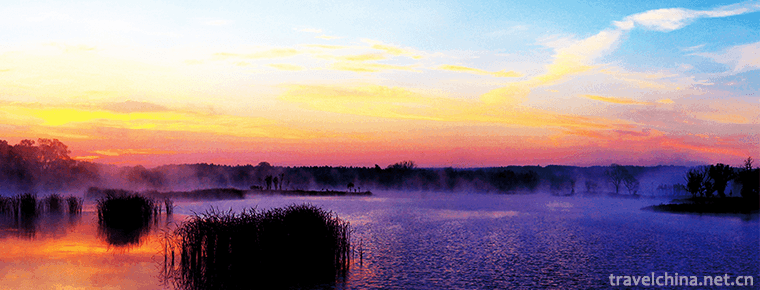
-
Leshan Giant Buddha
Located on the East Bank of Minjiang River in Leshan City.
Views: 165 Time 2018-10-13 -
Nanwan Lake Scenic Area
Nanwan Lake, also known as Nanhu Lake, is located in Xinyang City, Henan Province. It is known as the "Pearl of South Henan" and is a famous natural scenic spot of Nanwan Lake. All around th.
Views: 183 Time 2019-02-07 -
Shimen Xianhu Scenic Area
Shimen Xianhu Scenic Area is the first national 3A-level tourist scenic spot in Rongan County, located in Liuzhou, Guangxi. It has high Gorges out of Pinghu Lake.
Views: 117 Time 2019-02-08 -
Pearl Lane
Zhuji Lane, located in Zhuji Village, Zhuji Town, Nanxiong City, Guangdong Province, covers an area of about 3 square kilometers. Zhuji Ancient Lane is one of the national 4A scenic spots and one of t.
Views: 233 Time 2019-03-20 -
Comic Opera Funny opera
Funny opera is one of the local dramas in Shanghai. It is now mainly popular in Shanghai and its surrounding Wu dialect areas..
Views: 261 Time 2019-05-04 -
Lodgeroye and Zaszai
Lodgeroye and Zaszai is a representative long poem of Hani poetry style, which is widely spread in all villages inhabited by Hani Biyo people in Hani Autonomous County of Mojiang. There are ten chapte.
Views: 168 Time 2019-05-15 -
Xinyang Folk Songs
Xinyang Folk Song is the traditional folk music of Xinyang City. Xinyang City, known as the hometown of song and dance in Henan Province, has a rich stock of traditional folk music, dance and other tr.
Views: 311 Time 2019-07-06 -
Yangzhou lacquerware decoration skills
Yangzhou lacquerware painting process is cumbersome, the step is "batch putty scrape gray, brush paint and push light". During the Warring States Period, Yangzhou lacquerware decoration tech.
Views: 203 Time 2019-07-10 -
Deng Xiaoping
Deng Xiaoping (August 22, 1904 -1997 February 19th), formerly known as Deng Xiansheng, the scientific name of Deng Xixian, Guang'an, Sichuan. Go to Europe early Work study program After his return, he.
Views: 329 Time 2019-09-07 -
Lingshan Temple
Lingshan temple is located in Mianning County, Liangshan Prefecture, Sichuan Province. It is 8 km away from Mianning County. It is the most famous temple in Liangshan Prefecture. It belongs to Mianning County as well as Xichang Satellite Launch Center..
Views: 173 Time 2020-10-16 -
Lizhou ancient town
Lizhou ancient town is a big post station of the ancient Southern Silk Road, an ancient town of Liangshan Yi Autonomous Prefecture, and the place where the red army went through the long march..
Views: 191 Time 2020-10-16 -
Plant resources in Meishan
There are 2278 species of wild plants belonging to 861 genera and 229 families in Meishan City, including 149 species of bryophytes belonging to 71 genera and 48 families, 155 species of ferns belonging to 73 genera and 36 families, 20 species of gymnosperms.
Views: 360 Time 2020-12-18
